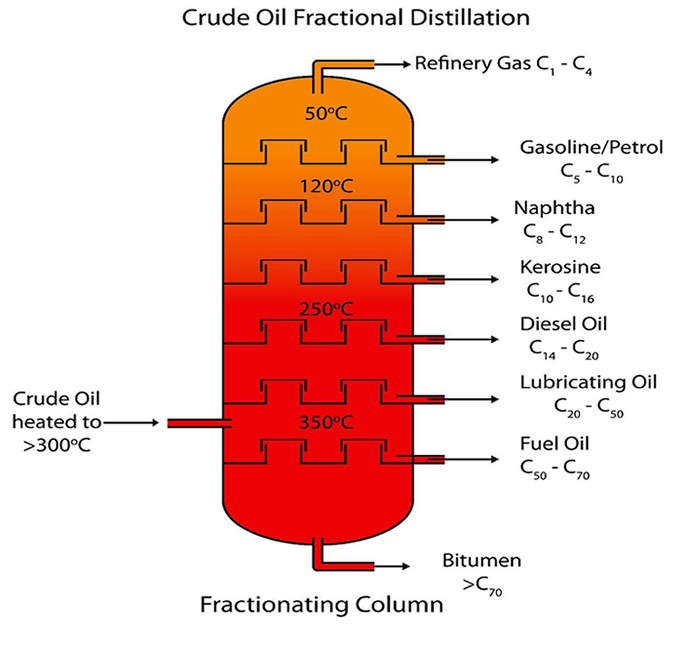Engine oil refers to the lubricating oil specially used in internal combustion engines. In addition to lubrication, it also has functions such as cleaning, rust prevention and cooling. So how do you distinguish between different levels of engine oil?
Distinguished by viscosity division level
1.10W-40 is the standard viscosity value of SAE (SAE is the abbreviation of “American Automobile Engineers Association”).This viscosity value first indicates that the oil is multi-grade oil, W is the abbreviation of Winter (winter),the smaller the number in front of W, the better the low temperature fluidity of the oil, the lower the ambient temperature available for use, and the better the protection of the engine when the cold car is started.The number behind W (the back of -) is an indicator of the high temperature resistance of the oil (that is the possibility of thinning). The larger the value, the better the protection of the oil at high temperatures.
2.Four-stroke engine oil
The winter oil grades for SAE lubricant viscosity classification are: 0W, 5W, 10W, 15W, 20W, 25W, and the symbol W stands for winter, the smaller the number before W, the smaller the low-temperature viscosity, the better the low-temperature fluidity, and the lower the applicable minimum temperature.
3.The summer oil grades for SAE lubricant viscosity classification are: 20, 30, 40, 50. The larger the number, the higher the viscosity and the higher the applicable maximum temperature.
4.The winter and summer general oil grades for SAE lubricant viscosity classification are: 5W-20, 5W-30, 5W-40, 5W-50, 10W-20, 10W-30, 10W-40, 10W-50, 15W-20, 15W -30, 15W-40, 15W-50, 20W-20, 20W-30, 20W-40, 20W-50, the smaller the number representing the winter part (the lower the applicable minimum temperature), the larger the number representing the summer part (the higher the applicable maximum temperature), the larger the applicable temperature range.
5.Two-stroke engine oil
Two-stroke gasoline engine oils have two viscosity grades, SAE20 and SAE30. SAE30 is generally used. If it is separate lubrication, use SAE20 for cold zone or ultralight duty two-stroke engine.
6.Cold start reliable point:
The cold start reliability point is +5° at the critical pumping temperature.
At this temperature range, the car has a good technical condition and the cold start process does not cause any problems.
Distinguished by quality level
- API (American Petroleum Institute) is the English abbreviation of American Petroleum Institute, API grade represents the grade of engine oil quality. It uses simple code to describe the ability of the engine oil to work. It distinguishes the oil grade standard mainly based on the low temperature fluidity, high temperature detergency, diffusion filterability, oxidation stability, wear resistance, corrosion and rust resistance, catalyst compatibility and environmental protection requirements of the oil.
- API engine oil is divided into two categories: “S” at the beginning of the series represents gasoline engine oil, specifications are: API SA, SB, SC, SD, SE, SF, SG, SH, SJ, SL, SM, SN. The “C” series begins with diesel engine oils. The specifications are: API CA, CB, CC, CD, CE, CF, CF-2, CF-4, CG-4, CH-4, CI-4.
- When the two letters “S” and “C” exist at the same time, it means that the oil is a general type of steam and diesel. The meaning of the letters after S or C is; from “SA” to “SM”, the performance of the oil is better than the former for each letter, and there are more additives in the oil to protect the engine. The lower the letter, the higher the quality level, and the oil level in the international brand is more than the SF level.
- CCMC’s original European oil certification organization CCMC was officially reorganized into ACEA in 1996. CCMC is Coremittee OfCommon Mar-ketAutomobi, eConstructors, also known as the “European Common Market Automobile Manufacturing Committee”. The CEC is responsible for developing test methods for fuel and lubricant performance, which are then classified by CCMC.
- The specifications set by CCMC range from the lowest level G1 to the highest level G4. G5, G stands for gasoline engine. PD stands for diesel engine. It is worth noting that the oils certified by G4 are limited to low temperature flow indexes of 10W, 150,000 and 20W, but there is no limit to the high temperature viscosity index behind W, and the oils certified by G5 only include 5W and 10W.

